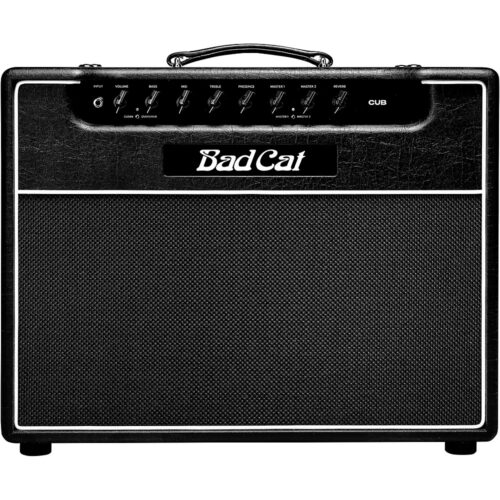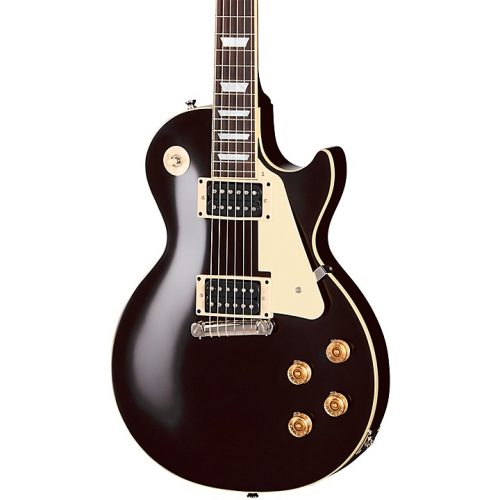
Table of Contents
Think guitar picks are just cheap plastic triangles? Think again. That humble little piece of gear sitting in your pocket might be the most underestimated tone-shaper in your entire rig. While you’re debating between a $3,000 Les Paul and a $2,500 Stratocaster, a 50-cent pick choice could make a bigger difference to your sound than you ever imagined.
Let’s jump right into the fascinating world of guitar picks – where physics meets feel, and where the right choice can transform your playing from muddy mess to crystal-clear magic.
The Physics Behind Guitar Picks: Why Size Actually Matters
Here’s something that’ll blow your mind: when you strike a string with a pick, you’re creating a triangular displacement that determines every single harmonic your guitar will produce. Think of it like dropping a pebble in a pond – the initial splash (your pick attack) creates ripples that define everything that follows.
Thin picks (0.4-0.6mm) stay in contact with the string for about 30-50 milliseconds – that’s like a gentle caress that typically emphasizes lower frequencies. The result? That bright, jangly tone perfect for strumming chord progressions that sparkle.
Thick picks (1.0mm+) deliver a quick 10-20ms contact – more like a sharp tap that tends to generate higher frequency harmonics. Think of it as the difference between a soft brush and a sharp knife – both cut, but with completely different results.
In controlled lab tests, rigid picks achieve roughly 85-95% energy transfer to the string, while flexible picks only manage about 60-75%. The rest gets absorbed by the pick bending and flexing. No wonder thick picks sound louder and more defined!
Material Madness: The Chemistry of Cool Tones
Different materials literally change how your pick talks to the strings. Here’s the breakdown in plain English:
The Classic Contenders
Celluloid (The Vintage Voice) Dating back to 1922, this combines plant fibers with a chemical softener. The result? It naturally tames harsh frequencies while keeping things bright – like having a built-in EQ that smooths rough edges.
Try: Fender Premium Celluloid 351 Shape Picks
Nylon (The Gentle Giant) Softer and more flexible than most plastics, nylon produces warmer, mellower tones. It’s like putting a cashmere sweater on your attack – soft, comfortable, and forgiving.
Try: Dunlop Nylon Standard Picks
Delrin/Tortex (The Goldilocks Pick) Jim Dunlop’s answer to banned tortoiseshell hits the sweet spot between bright and warm. Its slippery surface glides across strings like butter, making it perfect for both rhythm and lead work.
Try: Dunlop Tortex Standard Picks
Ultem (The Precision Machine) This aerospace-grade plastic maintains its stiffness even in extreme temperatures. It gives surgical precision – loved by shredders who need every note crystal clear.
Try: Dunlop Ultex Standard Picks
The Wild Cards
Metal Picks: These create the brightest possible tone with that distinctive harsh click. Brian May made this famous with his sixpence coin technique – it’s like adding a razor-sharp edge to every note.
Wood Picks: On the opposite end, wood’s natural softness creates almost no sharp attack. Perfect for that earthy, campfire-around-the-fire vibe.
The Shape Game of Guitar Picks: Geometry Gets Groovy
Pick Profiles That Pack a Punch
| Pick Shape | Best For | Why It Works |
|---|---|---|
| Standard 351 | Everything | Versatile tip, comfortable grip |
| Jazz III | Precision leads | Small profile forces tip accuracy |
| Triangle | Bluegrass/Gypsy | Three tips = longer life, secure grip |
| Shark Fin | Special effects | Multiple angles for tonal variety |
Pro tip: Screenshot this table for easy reference when pick shopping!
Sharp vs. Round Tips: Sharp tips concentrate all your picking force into a tiny point, releasing strings quickly for bright, defined attacks. Round tips spread that force over a larger area, creating gradual releases and warmer tones. Many rhythm players actually flip their picks and strum with the rounded shoulder – try it and hear the instant warmth.
Size Matters for Control: Small picks like the Jazz III (used by John Petrucci and countless metal masters) force you to use only the tip, eliminating wobble and maximizing precision. It’s like switching from a paintbrush to a fine-tip pen.
Genre-Specific Guitar Picks Prescriptions
Rock/Metal: Power and Precision
The Formula: 0.73-1.5mm Tortex or Ultem Why: Needs punch for power chords and precision for solos. James Hetfield swears by his 1.0mm Tortex for those crushing downstrokes.
Jazz: Warmth and Control
The Formula: 1.5-3.0mm with rounded tips Why: Creates natural high-frequency rolloff for that characteristic warm jazz tone.
Bluegrass/Gypsy Jazz: Volume and Projection
The Formula: 1.2-3.0mm triangular picks Why: Maximum acoustic volume with three rotating tips for longevity.
Folk/Pop Strumming: Smooth and Sparkly
The Formula: 0.4-0.6mm celluloid or nylon Why: Flexible enough to glide smoothly across strings without harsh attack.
String Gauge Science Made Simple
Here’s where things get really interesting. Light gauge strings (.008-.010″) bend easily under pick pressure, creating more harmonic overtones – like squeezing a rubber ball versus a tennis ball. They need less force but generate proportionally more high-frequency content.
Heavy gauge strings (.011-.013″+) resist bending through higher tension, typically requiring 2-3x more pick force. This is where thick picks shine – they deliver the energy needed to drive heavy strings properly.
The Magic Formula: Light strings work beautifully with thin picks for jangly brightness. Heavy strings pair perfectly with thick picks for punchy power. Mix and match at your own risk!
Player Biomechanics: The Science of Comfort
Studies suggest that around 81% of guitarists experience hand or wrist issues at some point. Pick choice actually affects this:
Grip Pressure: Excessive death-grips decrease speed and increase injury risk. Textured picks like Tortex allow lighter grip while maintaining control.
Speed Requirements: Fast alternate picking typically requires picks above 1.0mm to eliminate timing variations from flex. Every bit of pick bend is wasted motion.
Endurance Factors: Thicker picks may reduce grip strain since they don’t require as much squeezing force to maintain control.
Debunking Pick Myths with Science
Myth: “Vintage picks sound better”
Reality: In blind tests, listeners can’t consistently identify “vintage” characteristics. Modern engineered polymers often exceed vintage performance in every measurable way.
Myth: “Expensive picks are always better”
Reality: Performance improvements level off beyond moderate prices. Most tonal benefits are achievable with picks under $5.
Myth: “Pick choice doesn’t matter much”
Reality: Scientific analysis confirms frequency response changes of 2-8 decibels – well above what humans can detect (3 dB). So yes, it does matter!
Your Guitar Picks Prescription: Finding Your Perfect Match
- Start with medium thickness (0.70-0.80mm) and standard shape.
- Experiment with materials – celluloid for brightness, nylon for warmth, Tortex for balance.
- Match your strings – the lighter your strings, the thinner your pick can be.
- Consider your style – lead guitarists need precision, rhythm players need flow.
- Buy variety packs – most players find 2-3 favorites for different situations.
Famous Players and Their Guitar Picks
Ever wonder what the guitar gods actually use? Here’s the inside scoop on some legendary pick preferences:
Eddie Van Halen – The Thin Pick Revolutionary

Eddie famously used thin nylon picks — often around .60mm, and sometimes as light as .50mm in his early days — eventually settling on textured Dunlop Max-Grip Nylon versions. For a player known for blazing speed and precision, thin picks might seem counterintuitive, but they worked perfectly with his light touch, low string tension, and fluid legato style.
Kirk Hammett – The Modified Jazz Master

Metallica’s lead guitarist swears by Jazz III–style picks with his own custom V-shaped cutout for improved grip. The notch isn’t just for comfort — it provides a tactile anchor for string slides and special effects. His signature Ultex Jazz III comes in 1.38mm thickness, giving him the rigidity and precision needed for lightning-fast metal runs.
Jimmy Page – The Vintage Flex User

The Led Zeppelin legend relied on Herco Flex 75 picks during the ’70s (now sold by Dunlop as the HE211P). These nylon picks, roughly .88mm in stiffness, gave him the ability to switch between articulate riffing and his heavier lead work. While he often preferred fingerstyle, Page said certain songs — like “Black Dog” — just sounded better with a pick for a sharper, more metallic attack.
FAQ: Pick Problems Solved
Q: Why do some picks sound so much brighter than others? A: Material hardness and tip geometry. Harder materials with sharp tips create brighter tones by concentrating force and releasing strings quickly.
Q: Should I use the same pick for rhythm and lead? A: Many pros switch within songs. Different techniques often benefit from different pick characteristics.
Q: How often should I replace my picks? A: When the tip becomes noticeably rounded or rough. Metal picks last longest, wood picks may improve with age, plastic picks gradually dull.
Q: Why do thick picks feel harder to strum with? A: Less flex means less forgiveness when crossing strings. Your technique needs to be more precise since the pick won’t bend around the strings.
Q: Can pick choice really affect my speed? A: Absolutely. Rigid picks eliminate timing variations that slow down fast passages. Many shredders swear by Jazz IIIs for this reason.
Q: What’s the deal with expensive boutique picks? A: They often use premium materials with tighter manufacturing tolerances, but diminishing returns apply. A $20 pick isn’t necessarily 40x better than a 50-cent pick. Most of it is just “Marketing hype!”
Q: Why do my picks keep slipping? A: Either grip pressure is too low or the surface is too smooth. Try textured picks or consider picks with finger grips.
Q: Should beginners worry about pick choice? A: Start simple with medium thickness standard shapes, but don’t ignore it completely. The right pick makes learning easier and more enjoyable.
Guitar Pick Frequency Lab Tool
To make it even easier to understand the science behind your guitar pick, Get My Guitar has created a visual tool for the guitar nerds amongst us. Check it out below, you can also find it on our Online Guitar Tools page or by clicking here: Guitar Pick Frequency Lab Tool! Give it a try! Let us know what you think.
🔬 Guitar Pick Frequency Lab
Explore how pick thickness and material affect tone characteristics based on guitar acoustics research!
Final Feedback: Your Journey Down the Rabbit Hole
Here’s the beautiful truth about guitar picks: they’re simultaneously the most overlooked and most important piece of gear in your arsenal. You can spend thousands chasing the perfect amp, but that little triangle in your fingers has been quietly shaping your voice this entire time.
The science we’ve explored isn’t just academic curiosity – it’s your roadmap to intentional tone crafting. When you understand that a 0.5mm pick typically emphasizes lower frequencies while a 1.5mm pick tends to push upper harmonics, you’re no longer guessing. You’re engineering your sound.
Start your experiments with intention. Grab a guitar pick variety pack and listen with purpose. The $300 million global pick market exists because guitarists instinctively know this tiny piece of plastic matters. Trust that instinct, and go find the pick that unlocks tones you didn’t know you had in you.
👉 Check out more deals and gear reviews on the Get My Guitar Blog.
👉 Join our guitarist community to share your finds and discuss all things guitar!
👉 Check out the very latest Guitar News.
Disclosure: This post contains affiliate links. If you purchase through these links, we may earn a commission at no extra cost to you.
Recent Posts
Every guitarist knows this scenario: You spend five minutes tuning to perfection, play a few chords, maybe bend a [...]
Welcome to the FOURTH EDITION of our Guitar Brands Showcase! This week we're cranking it up for the brand [...]
Think guitar picks are just cheap plastic triangles? Think again. That humble little piece of gear sitting in your [...]
Blog Categories
Tags

Table of Contents
Think guitar picks are just cheap plastic triangles? Think again. That humble little piece of gear sitting in your pocket might be the most underestimated tone-shaper in your entire rig. While you’re debating between a $3,000 Les Paul and a $2,500 Stratocaster, a 50-cent pick choice could make a bigger difference to your sound than you ever imagined.
Let’s jump right into the fascinating world of guitar picks – where physics meets feel, and where the right choice can transform your playing from muddy mess to crystal-clear magic.
The Physics Behind Guitar Picks: Why Size Actually Matters
Here’s something that’ll blow your mind: when you strike a string with a pick, you’re creating a triangular displacement that determines every single harmonic your guitar will produce. Think of it like dropping a pebble in a pond – the initial splash (your pick attack) creates ripples that define everything that follows.
Thin picks (0.4-0.6mm) stay in contact with the string for about 30-50 milliseconds – that’s like a gentle caress that typically emphasizes lower frequencies. The result? That bright, jangly tone perfect for strumming chord progressions that sparkle.
Thick picks (1.0mm+) deliver a quick 10-20ms contact – more like a sharp tap that tends to generate higher frequency harmonics. Think of it as the difference between a soft brush and a sharp knife – both cut, but with completely different results.
In controlled lab tests, rigid picks achieve roughly 85-95% energy transfer to the string, while flexible picks only manage about 60-75%. The rest gets absorbed by the pick bending and flexing. No wonder thick picks sound louder and more defined!
Material Madness: The Chemistry of Cool Tones
Different materials literally change how your pick talks to the strings. Here’s the breakdown in plain English:
The Classic Contenders
Celluloid (The Vintage Voice) Dating back to 1922, this combines plant fibers with a chemical softener. The result? It naturally tames harsh frequencies while keeping things bright – like having a built-in EQ that smooths rough edges.
Try: Fender Premium Celluloid 351 Shape Picks
Nylon (The Gentle Giant) Softer and more flexible than most plastics, nylon produces warmer, mellower tones. It’s like putting a cashmere sweater on your attack – soft, comfortable, and forgiving.
Try: Dunlop Nylon Standard Picks
Delrin/Tortex (The Goldilocks Pick) Jim Dunlop’s answer to banned tortoiseshell hits the sweet spot between bright and warm. Its slippery surface glides across strings like butter, making it perfect for both rhythm and lead work.
Try: Dunlop Tortex Standard Picks
Ultem (The Precision Machine) This aerospace-grade plastic maintains its stiffness even in extreme temperatures. It gives surgical precision – loved by shredders who need every note crystal clear.
Try: Dunlop Ultex Standard Picks
The Wild Cards
Metal Picks: These create the brightest possible tone with that distinctive harsh click. Brian May made this famous with his sixpence coin technique – it’s like adding a razor-sharp edge to every note.
Wood Picks: On the opposite end, wood’s natural softness creates almost no sharp attack. Perfect for that earthy, campfire-around-the-fire vibe.
The Shape Game of Guitar Picks: Geometry Gets Groovy
Pick Profiles That Pack a Punch
| Pick Shape | Best For | Why It Works |
|---|---|---|
| Standard 351 | Everything | Versatile tip, comfortable grip |
| Jazz III | Precision leads | Small profile forces tip accuracy |
| Triangle | Bluegrass/Gypsy | Three tips = longer life, secure grip |
| Shark Fin | Special effects | Multiple angles for tonal variety |
Pro tip: Screenshot this table for easy reference when pick shopping!
Sharp vs. Round Tips: Sharp tips concentrate all your picking force into a tiny point, releasing strings quickly for bright, defined attacks. Round tips spread that force over a larger area, creating gradual releases and warmer tones. Many rhythm players actually flip their picks and strum with the rounded shoulder – try it and hear the instant warmth.
Size Matters for Control: Small picks like the Jazz III (used by John Petrucci and countless metal masters) force you to use only the tip, eliminating wobble and maximizing precision. It’s like switching from a paintbrush to a fine-tip pen.
Genre-Specific Guitar Picks Prescriptions
Rock/Metal: Power and Precision
The Formula: 0.73-1.5mm Tortex or Ultem Why: Needs punch for power chords and precision for solos. James Hetfield swears by his 1.0mm Tortex for those crushing downstrokes.
Jazz: Warmth and Control
The Formula: 1.5-3.0mm with rounded tips Why: Creates natural high-frequency rolloff for that characteristic warm jazz tone.
Bluegrass/Gypsy Jazz: Volume and Projection
The Formula: 1.2-3.0mm triangular picks Why: Maximum acoustic volume with three rotating tips for longevity.
Folk/Pop Strumming: Smooth and Sparkly
The Formula: 0.4-0.6mm celluloid or nylon Why: Flexible enough to glide smoothly across strings without harsh attack.
String Gauge Science Made Simple
Here’s where things get really interesting. Light gauge strings (.008-.010″) bend easily under pick pressure, creating more harmonic overtones – like squeezing a rubber ball versus a tennis ball. They need less force but generate proportionally more high-frequency content.
Heavy gauge strings (.011-.013″+) resist bending through higher tension, typically requiring 2-3x more pick force. This is where thick picks shine – they deliver the energy needed to drive heavy strings properly.
The Magic Formula: Light strings work beautifully with thin picks for jangly brightness. Heavy strings pair perfectly with thick picks for punchy power. Mix and match at your own risk!
Player Biomechanics: The Science of Comfort
Studies suggest that around 81% of guitarists experience hand or wrist issues at some point. Pick choice actually affects this:
Grip Pressure: Excessive death-grips decrease speed and increase injury risk. Textured picks like Tortex allow lighter grip while maintaining control.
Speed Requirements: Fast alternate picking typically requires picks above 1.0mm to eliminate timing variations from flex. Every bit of pick bend is wasted motion.
Endurance Factors: Thicker picks may reduce grip strain since they don’t require as much squeezing force to maintain control.
Debunking Pick Myths with Science
Myth: “Vintage picks sound better”
Reality: In blind tests, listeners can’t consistently identify “vintage” characteristics. Modern engineered polymers often exceed vintage performance in every measurable way.
Myth: “Expensive picks are always better”
Reality: Performance improvements level off beyond moderate prices. Most tonal benefits are achievable with picks under $5.
Myth: “Pick choice doesn’t matter much”
Reality: Scientific analysis confirms frequency response changes of 2-8 decibels – well above what humans can detect (3 dB). So yes, it does matter!
Your Guitar Picks Prescription: Finding Your Perfect Match
- Start with medium thickness (0.70-0.80mm) and standard shape.
- Experiment with materials – celluloid for brightness, nylon for warmth, Tortex for balance.
- Match your strings – the lighter your strings, the thinner your pick can be.
- Consider your style – lead guitarists need precision, rhythm players need flow.
- Buy variety packs – most players find 2-3 favorites for different situations.
Famous Players and Their Guitar Picks
Ever wonder what the guitar gods actually use? Here’s the inside scoop on some legendary pick preferences:
Eddie Van Halen – The Thin Pick Revolutionary

Eddie famously used thin nylon picks — often around .60mm, and sometimes as light as .50mm in his early days — eventually settling on textured Dunlop Max-Grip Nylon versions. For a player known for blazing speed and precision, thin picks might seem counterintuitive, but they worked perfectly with his light touch, low string tension, and fluid legato style.
Kirk Hammett – The Modified Jazz Master

Metallica’s lead guitarist swears by Jazz III–style picks with his own custom V-shaped cutout for improved grip. The notch isn’t just for comfort — it provides a tactile anchor for string slides and special effects. His signature Ultex Jazz III comes in 1.38mm thickness, giving him the rigidity and precision needed for lightning-fast metal runs.
Jimmy Page – The Vintage Flex User

The Led Zeppelin legend relied on Herco Flex 75 picks during the ’70s (now sold by Dunlop as the HE211P). These nylon picks, roughly .88mm in stiffness, gave him the ability to switch between articulate riffing and his heavier lead work. While he often preferred fingerstyle, Page said certain songs — like “Black Dog” — just sounded better with a pick for a sharper, more metallic attack.
FAQ: Pick Problems Solved
Q: Why do some picks sound so much brighter than others? A: Material hardness and tip geometry. Harder materials with sharp tips create brighter tones by concentrating force and releasing strings quickly.
Q: Should I use the same pick for rhythm and lead? A: Many pros switch within songs. Different techniques often benefit from different pick characteristics.
Q: How often should I replace my picks? A: When the tip becomes noticeably rounded or rough. Metal picks last longest, wood picks may improve with age, plastic picks gradually dull.
Q: Why do thick picks feel harder to strum with? A: Less flex means less forgiveness when crossing strings. Your technique needs to be more precise since the pick won’t bend around the strings.
Q: Can pick choice really affect my speed? A: Absolutely. Rigid picks eliminate timing variations that slow down fast passages. Many shredders swear by Jazz IIIs for this reason.
Q: What’s the deal with expensive boutique picks? A: They often use premium materials with tighter manufacturing tolerances, but diminishing returns apply. A $20 pick isn’t necessarily 40x better than a 50-cent pick. Most of it is just “Marketing hype!”
Q: Why do my picks keep slipping? A: Either grip pressure is too low or the surface is too smooth. Try textured picks or consider picks with finger grips.
Q: Should beginners worry about pick choice? A: Start simple with medium thickness standard shapes, but don’t ignore it completely. The right pick makes learning easier and more enjoyable.
Guitar Pick Frequency Lab Tool
To make it even easier to understand the science behind your guitar pick, Get My Guitar has created a visual tool for the guitar nerds amongst us. Check it out below, you can also find it on our Online Guitar Tools page or by clicking here: Guitar Pick Frequency Lab Tool! Give it a try! Let us know what you think.
🔬 Guitar Pick Frequency Lab
Explore how pick thickness and material affect tone characteristics based on guitar acoustics research!
Final Feedback: Your Journey Down the Rabbit Hole
Here’s the beautiful truth about guitar picks: they’re simultaneously the most overlooked and most important piece of gear in your arsenal. You can spend thousands chasing the perfect amp, but that little triangle in your fingers has been quietly shaping your voice this entire time.
The science we’ve explored isn’t just academic curiosity – it’s your roadmap to intentional tone crafting. When you understand that a 0.5mm pick typically emphasizes lower frequencies while a 1.5mm pick tends to push upper harmonics, you’re no longer guessing. You’re engineering your sound.
Start your experiments with intention. Grab a guitar pick variety pack and listen with purpose. The $300 million global pick market exists because guitarists instinctively know this tiny piece of plastic matters. Trust that instinct, and go find the pick that unlocks tones you didn’t know you had in you.
👉 Check out more deals and gear reviews on the Get My Guitar Blog.
👉 Join our guitarist community to share your finds and discuss all things guitar!
👉 Check out the very latest Guitar News.
Disclosure: This post contains affiliate links. If you purchase through these links, we may earn a commission at no extra cost to you.
Recent Posts
Every guitarist knows this scenario: You spend five minutes tuning to perfection, play a few chords, maybe bend a [...]
Welcome to the FOURTH EDITION of our Guitar Brands Showcase! This week we're cranking it up for the brand [...]
Think guitar picks are just cheap plastic triangles? Think again. That humble little piece of gear sitting in your [...]
Blog Categories
Tags
Leave a Comment
Other Posts
Embark on a journey to discover the best acoustic guitars under $1000 for 2024. Perfect for home musicians and guitar enthusiasts alike, this guide is [...]
Introducing "Get My Guitar Guru" – Your Personal AI Guitar Tech Assistant - BETA Mode Guitar enthusiasts, brace yourselves for an exciting innovation in the [...]
We are thrilled to announce that Get My Guitar has expanded our deal-finding expertise into the world of MIDI, DJ gear, keyboards & much more! [...]
















